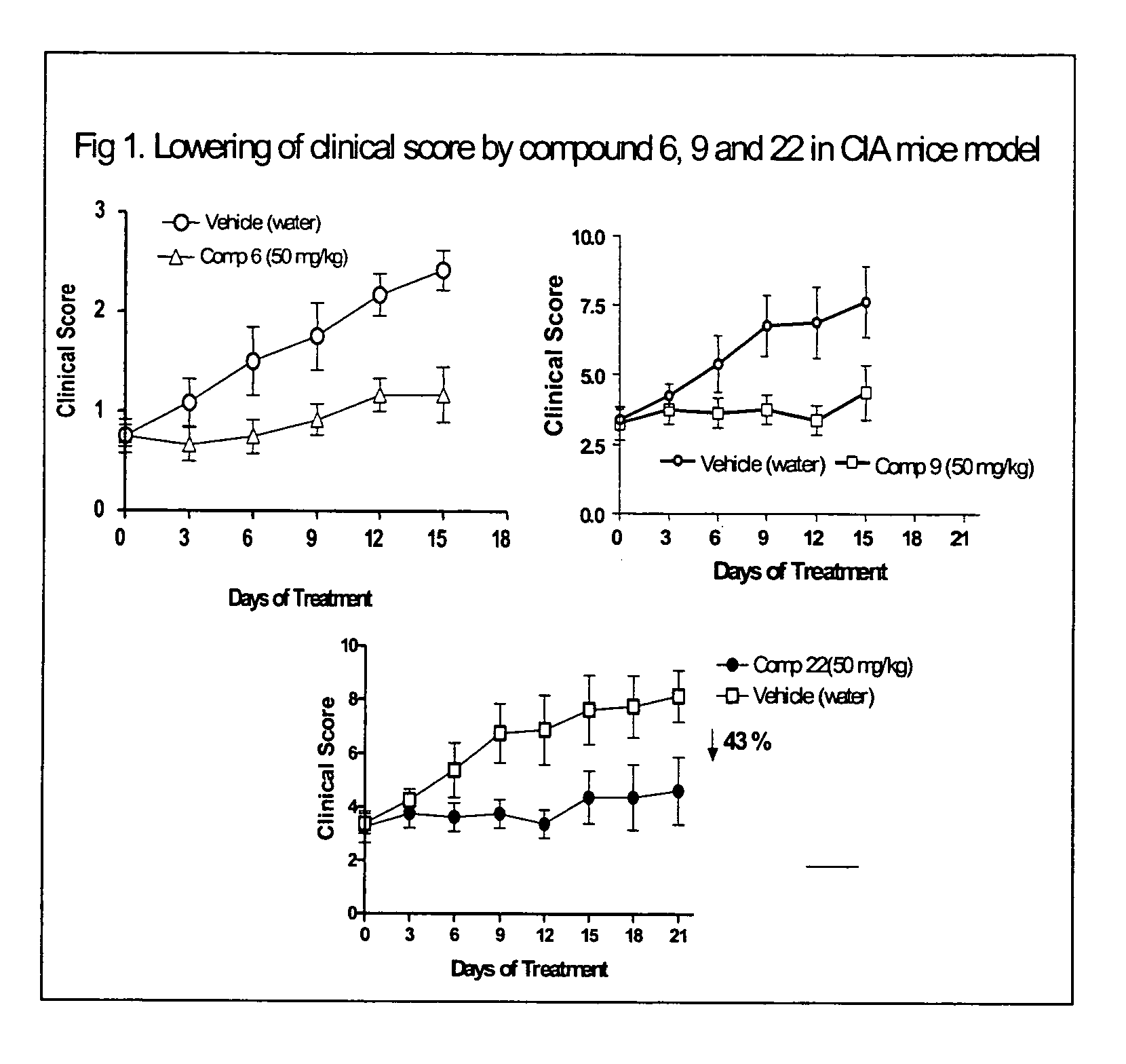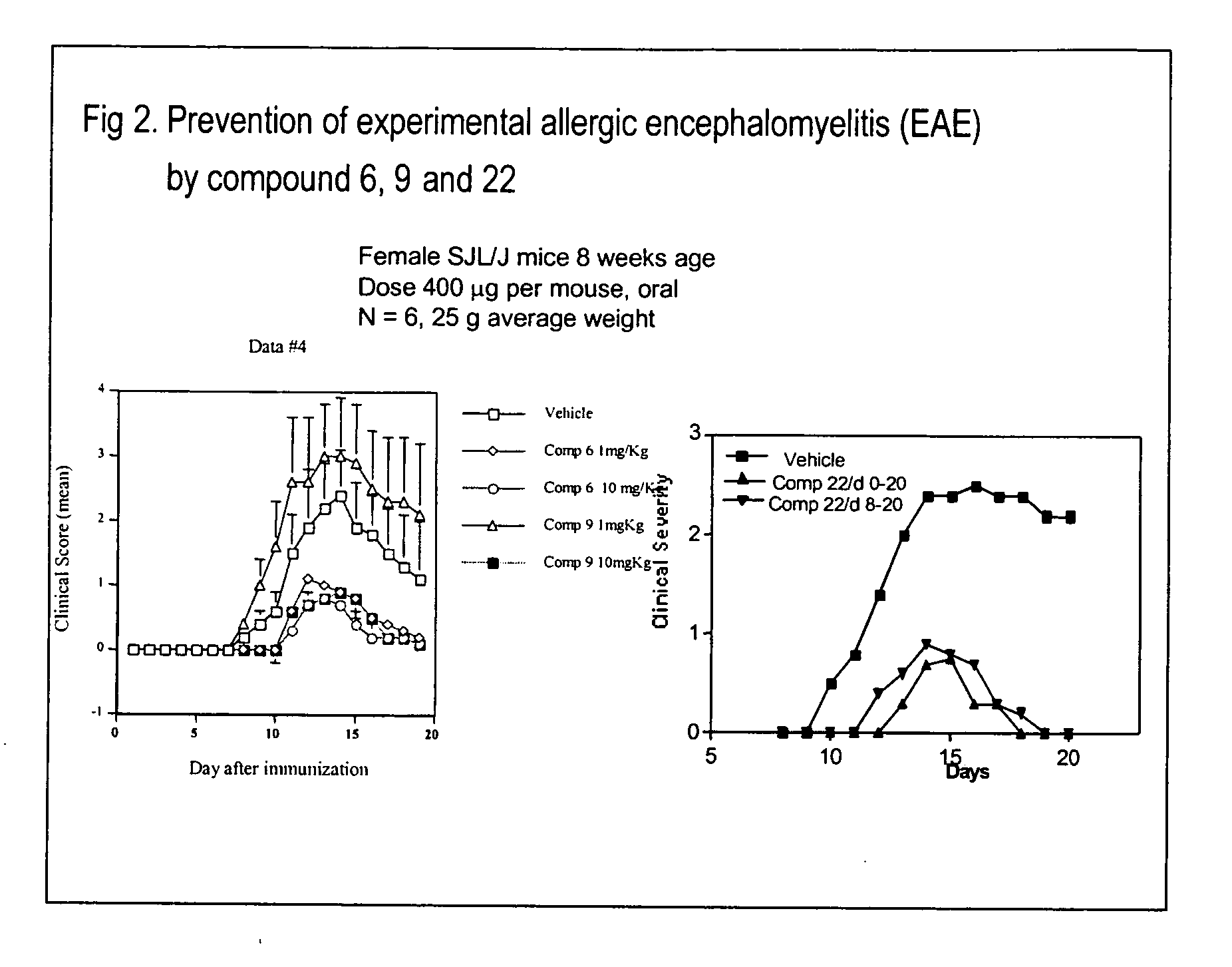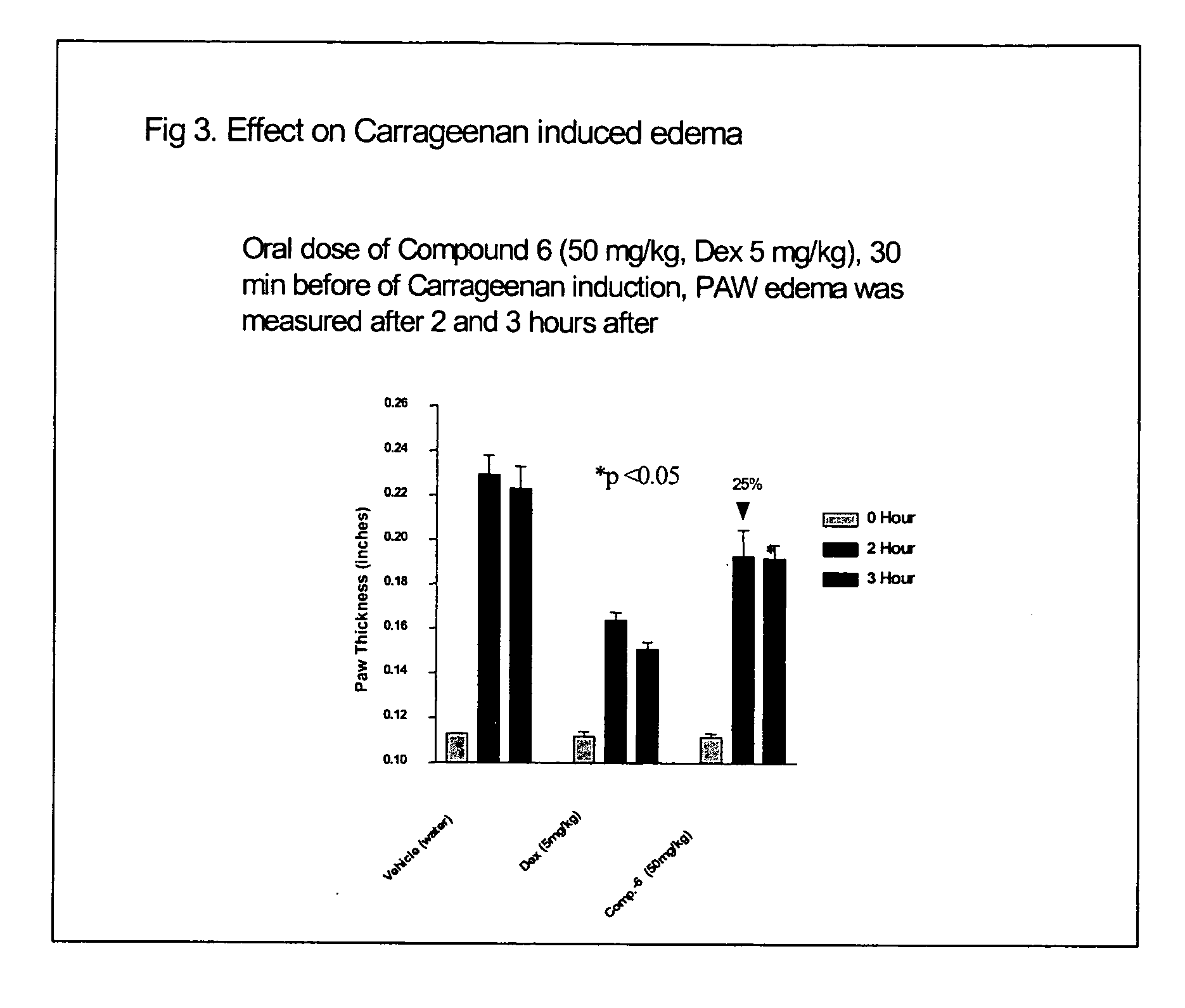Novel hydroxamic acid-containing amino acid derivatives
a technology of hydroxamic acid and amino acid derivatives, which is applied in the field of new hydroxamic acidcontaining amino acid derivatives, can solve the problems of not being able to cure ms, and no medical treatment is available so far, and achieve the effects of lowering blood glucose, serum insulin, free fatty acids, cholesterol and triglyceride levels, and being useful in the treatment and/or prophylaxis of metabolic disorders
- Summary
- Abstract
- Description
- Claims
- Application Information
AI Technical Summary
Benefits of technology
Problems solved by technology
Method used
Image
Examples
example 1
Synthesis of 2-amino-3-[4-(4-hydroxycarbamoylphenoxy)-phenyl]-propionic acid benzyl ester hydrochloric acid salt (6)
[0076]
Step-I
Preparation of 2-tertbutoxycarbonylamino-3-[4-(4-formylphenoxy)-phenyl]-propionic acid (2)
[0077]
Potassium carbonate (14.74 g, 107 mmol) and 4-fluorobenzaldehyde (18.6 mL, 180 mmol) were added to a solution of amino acid (N-t-butoxycarbonyl-L-tyrosine) (10.0 g, 36 mmol) in anhydrous DMF (35 mL). The resulting suspension was refluxed at 75±5° C. under an atmosphere of argon. After 48 hr, the reaction mixture was cooled to room temperature, diluted with water (200 mL) and extracted with EtOAc (2×100 mL). The aqueous layer was collected, acidified with 5.0 M HCl to pH ˜2.0 and extracted with EtOAc (2×150 mL). The resulting EtOAc layer was extracted with water (1×150 mL) and brine (1×150 mL), dried over anhydrous magnesium sulfate, filtered and concentrated under reduced pressure to yield the desired aldehyde as a low melting solid (13.7 g, ˜99%). 1H NMR (3...
example 2
Synthesis of 2-amino-3-[4-(4-hydroxycarbamoyl-phenoxy)-phenyl]-propionic acid hydrochloric acid salt (9)
[0082]
Step I
Preparation of 3-[4-(4-benzyloxycarbamoylphenoxy)-phenyl]-2-tert-butoxycarbonylamino-propionic acid benzyl ester (7)
[0083]
The acid compound 4 (0.6 g, 1.22 mmol) was dissolved in dry DMF (15 mL) and cooled to 0-5° C. 1-Hydroxybenzotriazole (0.18 g, 1.34 mmol), 1-(3-dimethylaminopropyl)-3-ethylcarbodiimide hydrochloride (0.23 g, 1.22 mmol), and triethylamine (0.6 mL, 3.66 mmol) were added to the above mixture followed by stirring for 15 min. O-Benzylhydroxylamine hydrochloride (0.22 g, 1.34 mmol) was added and the mixture was allowed to come to room temperature and stirred for 18 h. The solvent was evaporated under reduced pressure and the residual oil was taken up in EtOAc (50 mL). The organic layer was extracted with 2.0 M HCl (1×10 mL), saturated NaHCO3 (1×10 mL), water (1×25 mL) and brine (1×25 mL). The resulting EtOAc layer was dried and concentrated to yield t...
example 3
Synthesis of 4-[4-(2-amino-2-dimethylcarbamoylethyl)-phenoxy]-N-hydroxybenzamide hydrochloric acid salt (13)
[0086]
Step I
Preparation of {1-dimethylcarbamoyl-2-[4-(4-formylphenoxy)-phenyl]-ethyl}-carbamic acid tert-butyl ester (10)
[0087]
The aldehyde compound 2 (2.0 g, 5.2 mmol) was dissolved in CH2Cl2 (30 mL) and stirred at room temperature under an atmosphere of argon. Triethylamine (0.87 mL, 6.23 mmol) and BOP reagent (2.53 g, 5.7 mmol) were added and the reaction mixture was stirred for 15 min. Dimethylamine (2.0 M solution in THF, 13.0 mL, 26.0 mmol) was added and the resulting solution was stirred at room temperature for about 2-3 h. The solvent was removed under reduced pressure and the resulting oil was taken up in EtOAc (100 mL). The organic layer was extracted with 0.5 N NaOH (1×10 mL), water (2×50 mL) and brine (1×50 mL). Drying and concentration of the organic layer gave the desired amide 10 (2.1 g, ˜98%). 1H NMR (400 MHz, DMSO-d6): 9.91 (s, 1H), 7.90 (d, J=8.8 Hz, 2H)...
PUM
| Property | Measurement | Unit |
|---|---|---|
| temperature | aaaaa | aaaaa |
| temperature | aaaaa | aaaaa |
| temperature | aaaaa | aaaaa |
Abstract
Description
Claims
Application Information
 Login to View More
Login to View More - R&D
- Intellectual Property
- Life Sciences
- Materials
- Tech Scout
- Unparalleled Data Quality
- Higher Quality Content
- 60% Fewer Hallucinations
Browse by: Latest US Patents, China's latest patents, Technical Efficacy Thesaurus, Application Domain, Technology Topic, Popular Technical Reports.
© 2025 PatSnap. All rights reserved.Legal|Privacy policy|Modern Slavery Act Transparency Statement|Sitemap|About US| Contact US: help@patsnap.com



